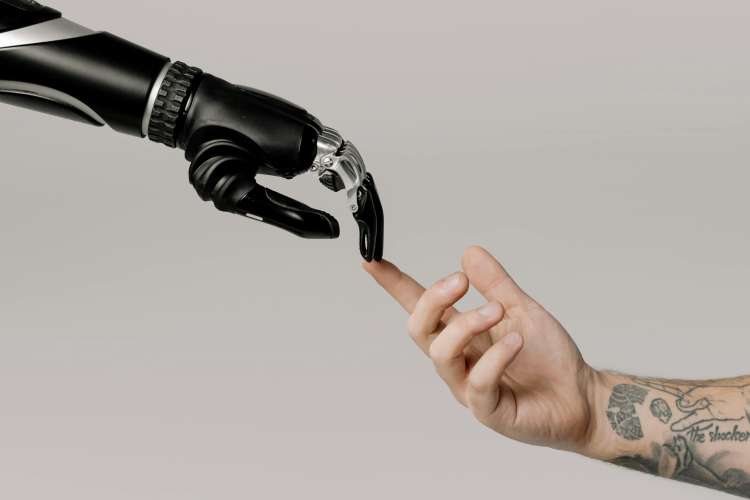
India’s ambitious embrace of artificial intelligence is underwritten by an impressive headline number—Rs 10,371 crore allocated to the IndiaAI Mission. It signals a political intent to integrate AI into the core of governance and growth. But while attention is riveted on algorithms and compute infrastructure, the scaffolding needed for meaningful and inclusive innovation is missing. AI cannot be built on thin institutional foundations. Without stronger legal frameworks and greater inclusion—particularly of women—India risks building a digital future that mirrors its social inequities.
The underlying concern is simple: technology is racing ahead of regulation, and inclusion is an afterthought rather than a design principle. The problem is not uniquely Indian, but its consequences may be more acute here, where access to opportunity is already unevenly distributed.
READ | World’s largest data breach spurs rush to passkeys
Weak innovation pipeline
The cracks begin with India’s anaemic research and development ecosystem. Public and private investment in R&D stands at a paltry 0.7% of GDP—one of the lowest among major economies. This is less than a third of China’s R&D spend and far below the levels seen in the OECD. India’s innovation framework lacks both institutional incentives and the human capital depth required to generate breakthroughs.
The result is an underperforming pipeline. Start-ups find it difficult to commercialise new technologies. Universities operate in silos, rarely bringing research into the market. Domestic patent filings are limited, and India remains more of a technology importer than a creator. The Rs 10,000 crore allocation will not plug these structural weaknesses unless accompanied by reforms in the way innovation is financed, nurtured, and protected.
Coding without a rulebook
India’s AI push is also unfolding in a legal vacuum. The Digital Personal Data Protection Act is a useful starting point, but it does not address the core risks posed by AI systems. There is no framework to determine liability when algorithms cause harm, nor clarity on how to enforce fairness or transparency in automated decision-making. Intellectual property rules are fuzzy in the context of generative AI, and there are no effective grievance redressal mechanisms for algorithmic error or bias.
This is not a matter of theoretical concern. As AI systems are embedded into sectors such as healthcare, credit, and welfare delivery, opaque or biased algorithms can magnify existing social asymmetries. The absence of regulation puts both consumers and businesses at risk and may undermine long-term trust in digital systems.
The gender blind spot
Perhaps the most under-discussed challenge in India’s innovation story is gender exclusion. Women account for just 14% of the country’s STEM workforce, and their share in AI-specific research or leadership roles is even smaller. In comparison, the United States stands at 28%, the EU at 34%, and Canada at 33%. China, while faring better in terms of female STEM education, also exhibits weak AI representation among women professionals.
This under-representation is not just about workplace equality—it has direct implications for how technology is designed and deployed. AI systems trained on non-diverse datasets or built by homogenous teams tend to embed biases. The result is algorithms that may systematically discriminate in areas like hiring, credit scoring, or predictive policing.
India’s limited interventions—such as PMGDISHA or the ‘AI for Women’ initiative with AI labs in 30 women’s colleges—are well-meaning but fall short of systemic correction. What is needed is targeted legal and financial support for gender-diverse R&D teams, greater public funding tied to inclusion metrics, and reforms in patenting incentives that encourage broader participation.
Learning from elsewhere
Other countries are acting with greater clarity. The EU’s Women in Digital initiative seeks to double women’s participation in ICT by 2030. Canada has embedded gender mandates into its publicly funded AI research programmes. These are not philanthropic efforts—they are strategic responses to the economic and ethical challenges of building a truly inclusive innovation economy.
India cannot afford to view inclusion as peripheral. A McKinsey Global Institute study estimates that bridging the gender gap in India’s labour market could boost GDP by as much as $700 billion by 2025. In an era of slowing growth and constrained public resources, this is not a figure to be ignored.
Real work begins now
If India is serious about its Viksit Bharat goals, it must rethink its innovation strategy. Three priorities stand out. First, public investment in R&D must rise, not only in quantum but in effectiveness. Second, regulatory institutions need to get ahead of technology rather than chase its consequences. Third, gender inclusion must become part of the architecture—whether in skilling, patent law, or AI ethics.
India’s embassies are doing their part abroad to attract capital and technology. The more pressing challenge lies at home—how to coordinate ministries, regulators, and industry to create an ecosystem that is both innovative and equitable. Technology alone is not enough. The systems around it—legal, institutional, and social—must evolve in tandem.
India’s coming decade may well be defined by how it handles AI. But leadership in AI will not come from the size of server farms or headline investments. It will depend on whether the country can build innovation with integrity, inclusivity, and foresight. If India misses this window, it will not be for lack of ambition—but for lack of design.
Dr Chitra Saruparia is Assistant Professor (Economics), Assistant Dean (UG Council), and Director, Centre for Economics, Law and Public Policy at National Law University, Jodhpur.
